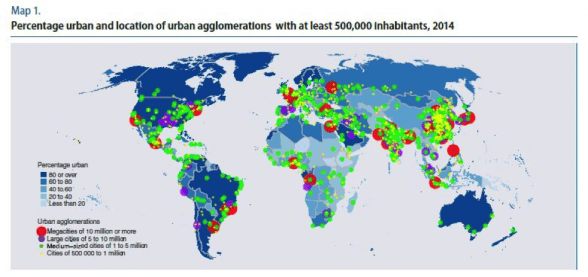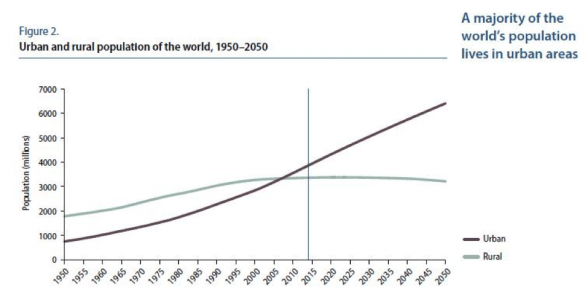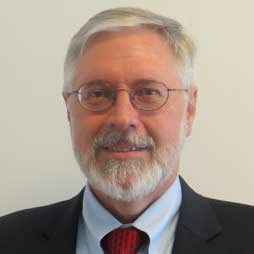Pathways to Urban Sustainability: Challenges and Opportunities

Who will you meet?
Cities are innovating, companies are pivoting, and start-ups are growing. Like you, every urban practitioner has a remarkable story of insight and challenge from the past year.
Meet these peers and discuss the future of cities in the new Meeting of the Minds Executive Cohort Program. Replace boring virtual summits with facilitated, online, small-group discussions where you can make real connections with extraordinary, like-minded people.

Source: United Nations, Department of Economic and Social Affairs, Population Division (2014). World Urbanization Prospects: The 2014 Revision, Highlights (ST/ESA/SER.A/352).
The concept of sustainability and sustainable growth and development has largely become a global mantra, and no wonder, we’ve all heard the statistics – in the last 50 years, the world’s population has increased by 133%, world energy consumption by 55%, and global water withdrawals by 104%. But, did you know that all this is occurring primarily in cities? Over half the world’s population now lives in urban areas, an increase of 24% over the last 50 years, and this number is projected to climb another 16% by 2050. As these trends continue, besides the clear implications for food, energy, water, and ecosystems , the pressures and challenges of sustainable growth and development will be concentrated in cities, impacting issues surrounding infrastructure, equity, pollution, and environmental degradation.
Cities are complex and dynamic creatures, and urbanization is integrally entwined with the three pillars of sustainability. So what tools, what policies, what success (and cautionary) stories and best practices are available to cities in order to integrate the environmental, economic and social systems that exist in their metropolitan regions and are crucial for their transition to sustainability?

Source: United Nations, Department of Economic and Social Affairs, Population Division (2014). World Urbanization Prospects: The 2014 Revision, Highlights (ST/ESA/SER.A/352).
Pathways to Urban Sustainability
Under the auspices of the National Academies of Sciences, Engineering, and Medicine, the Science and Technology for Sustainability Program is conducting a study by using examples from metropolitan regions to understand how sustainable practices could contribute to the development, growth and regeneration of major metropolitan regions in the United States. In doing so, the study will provide a framework incorporating the three sustainability pillars – social development, economic development, and responsible environmental management – that exist in metropolitan regions that could serve as a blueprint for other regions with similar barriers to and opportunities for sustainable development and redevelopment. An expert committee chaired by Linda Katehi, Chancellor of the University of California, Davis, has organized a series of public data-gathering meetings in metropolitan regions including Los Angeles, CA and Chattanooga, TN, to examine issues relating to urban sustainability. In doing so, the study is focusing on the following key questions:
- How national, regional, and local actors are approaching sustainability, and specifically, how they are maximizing benefits and managing tradeoffs among social, environmental, and economic objectives;
- How stakeholders (e.g. industry, city/county governments, universities, public groups) can better integrate science, technology, and research into catalyzing and supporting sustainability initiatives;
- The commonalities, strengths, and gaps in knowledge among rating systems that assess the sustainability of metropolitan regions; and
- A paradigm that would incorporate the critical systems needed for sustainable development in metropolitan regions.
These questions are essential in gathering observations and findings to assess linkages among research and development, hard and soft infrastructure, innovative technology for sustainability in metropolitan regions, factors that inhibit or reduce regional sustainability and resilience, future economic drivers, and how federal, state and local agency, and private sector efforts and partnerships can complement/leverage the efforts of key stakeholders and assess the role of public and private initiatives that may serve as a model for moving forward. The outcome of this process will be a final report with findings and recommendations that will serve as a resource for cities and their erstwhile practitioners, government, academia and others actively involved in urban sustainability issues.
Urban Sustainability Looking Forward
As the world continues to urbanize, small-, medium-, large-, and mega-cities alike will face both daunting challenges and unique opportunities that sustainable growth and development entails, from climate change and extreme poverty to linking communities and access to social services. Metropolitan regions have a central role as catalysts for development and economic growth, serving as integral links between peoples and nations globally, therefore it is crucial that cities have the necessary tools and knowledge to implement policies and governance structures that successfully integrate the environmental, economic and social systems that exist within their boundaries and are essential in their transition towards sustainability. The story of a transition to a more sustainable planet globally is necessarily and inextricably linked to the parallel story of urban sustainability and sustainable cities.
About the Authors:
 Dr. Jerry Miller is Director of the Science and Technology for Sustainability (STS) program at the National Academies of Sciences, Engineering and Medicine. He served in numerous public and private roles including several years at the White House Office of Science and Technology Policy prior to joining the Academies.
Dr. Jerry Miller is Director of the Science and Technology for Sustainability (STS) program at the National Academies of Sciences, Engineering and Medicine. He served in numerous public and private roles including several years at the White House Office of Science and Technology Policy prior to joining the Academies.
 Yasmin Romitti serves as Research Assistant for the Academies’ STS program and brings national and international experience in sustainability.
Yasmin Romitti serves as Research Assistant for the Academies’ STS program and brings national and international experience in sustainability.
Discussion
Leave your comment below, or reply to others.
Please note that this comment section is for thoughtful, on-topic discussions. Admin approval is required for all comments. Your comment may be edited if it contains grammatical errors. Low effort, self-promotional, or impolite comments will be deleted.
Read more from MeetingoftheMinds.org
Spotlighting innovations in urban sustainability and connected technology
Middle-Mile Networks: The Middleman of Internet Connectivity
The development of public, open-access middle mile infrastructure can expand internet networks closer to unserved and underserved communities while offering equal opportunity for ISPs to link cost effectively to last mile infrastructure. This strategy would connect more Americans to high-speed internet while also driving down prices by increasing competition among local ISPs.
In addition to potentially helping narrow the digital divide, middle mile infrastructure would also provide backup options for networks if one connection pathway fails, and it would help support regional economic development by connecting businesses.
Wildfire Risk Reduction: Connecting the Dots
One of the most visceral manifestations of the combined problems of urbanization and climate change are the enormous wildfires that engulf areas of the American West. Fire behavior itself is now changing. Over 120 years of well-intentioned fire suppression have created huge reserves of fuel which, when combined with warmer temperatures and drought-dried landscapes, create unstoppable fires that spread with extreme speed, jump fire-breaks, level entire towns, take lives and destroy hundreds of thousands of acres, even in landscapes that are conditioned to employ fire as part of their reproductive cycle.
ARISE-US recently held a very successful symposium, “Wildfire Risk Reduction – Connecting the Dots” for wildfire stakeholders – insurers, US Forest Service, engineers, fire awareness NGOs and others – to discuss the issues and their possible solutions. This article sets out some of the major points to emerge.
Innovating Our Way Out of Crisis
Whether deep freezes in Texas, wildfires in California, hurricanes along the Gulf Coast, or any other calamity, our innovations today will build the reliable, resilient, equitable, and prosperous grid tomorrow. Innovation, in short, combines the dream of what’s possible with the pragmatism of what’s practical. That’s the big-idea, hard-reality approach that helped transform Texas into the world’s energy powerhouse — from oil and gas to zero-emissions wind, sun, and, soon, geothermal.
It’s time to make the production and consumption of energy faster, smarter, cleaner, more resilient, and more efficient. Business leaders, political leaders, the energy sector, and savvy citizens have the power to put investment and practices in place that support a robust energy innovation ecosystem. So, saddle up.






0 Comments